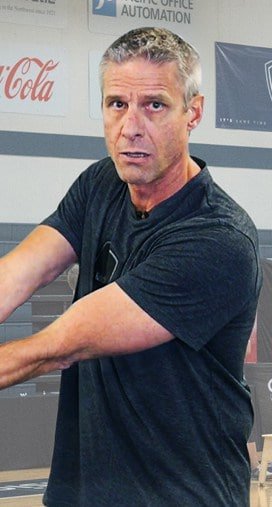This session focuses on what high-level college coaches would emphasize when teaching young athletes how to hit the ball.
Penn State coach Russ Rose, UCLA coach Mike Sealy and three-time U.S. Olympic coach Terry Liskevych cover the essential components of volleyball hitting drills for middle school players: approach footwork, step close, jump and arm swing.
The video will cover:
- 02:00 – 04:06 Four-step hitting approach
- 04:07 – 05:57 When to change a player’s footwork
- 06:33 – 07:16 Jump technique for attacking
- O7:31 – 08:05 When to hit the bottom of the ball
- 08:06 – 10:03 Coordinating the jump with the arm swing
Hitting drills for middle school volleyball
Like all volleyball skills, a big key to improving these techniques is getting plenty of reps. “Volleyball is all about skills,” Liskevych says. “You have to teach the skills over and over.”
As Liskevych points out, hitting skills can be refined in many ways – at volleyball practice or at home, with a ball or without, in front of a mirror or in front of the net at the gym. What’s important is to drill consistently and continuously over time.
Drill 1: The four-step approach
Rose, who has won a record seven NCAA championships at Penn State, prefers the four-step approach: right, left, right, left for right-handed players; left, right, left, right for left-handed players.
When teaching a hitting approach or doing volleyball hitting drills, Rose emphasizes these points:
- Go slow for the first two steps then quick for the final two steps
- The first step is small; the second and third steps are big
- Use both arms to help you elevate and jump more explosively
- Jump from heel to toe
- Land from toe to heel
When to change a player’s footwork
Volleyball players often develop bad habits, especially when it comes to footwork. Should coaches change an attacker’s footwork? Rose explains that the answer is different on a case-by-case basis. If it’s a middle school player, yes. Correcting poor form at an early age is necessary to help players reach their potential.
For older players – say, high school and above – it’s more complicated. In Rose’s opinion, a 16-year-old goofy-footed outside hitter who can hit .400 might be best left alone because changing technique takes more time as players get older – time that could be better spent on improving the entire team.
“Young kids, I want to teach them to do it right,” Rose says. “Older kids, I want to find a way to win. Some people might say, ‘That’s not what youth sports are about.’ But if we’re going to spend a lot of time (practicing volleyball), I think winning is a nice reward.”
Drill 2: Stay off the net
Liskevych, who has worked with players ranging from juniors to Olympians, stresses that a hitter’s attack jump shouldn’t take them too close to the net. His reasoning: If you’re closer than two feet to the net when you attack the ball, you’re easier to block.
To teach this, Liskevych does a simple volleyball drill where he stands close to the net while attackers take an approach directly at him. This requires them to jump, swing and land without running into him, which reinforces the goal – landing with some space between themselves and the net.
Drill 3: Hit the bottom of the ball
Another of Liskevych’s favorite teaching points for attacking is “hitting the bottom of the ball.” Too often, young players make contact near the top of the ball, even when their hitting hand is below the top of the net. This leads to a lot of errors. With a lower contact point, the player can arc balls over the net and give their team a chance to score.
Drill 4: The step close
Sealy puts a high priority on teaching and practicing “the step close,” the final two steps of a hitting approach. These steps give you the explosive power to jump higher and attack more forcefully.
Spending extra time doing hitting drills, especially those that focus on the two-step approach can lead to major improvements for outside hitters.
Teach the little things
Learning to be a strong attacker is no easy task. It involves hours of technique work from head to toe. As a coach, if you can break it down into small components as seen in this video, you’ll make the process less daunting for young players and a whole lot more fun.


